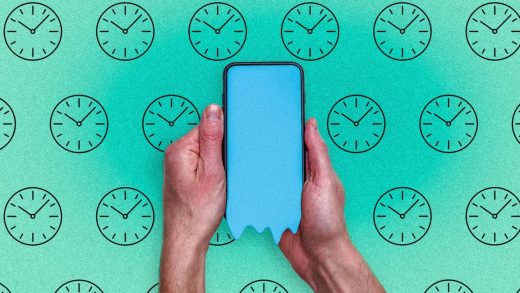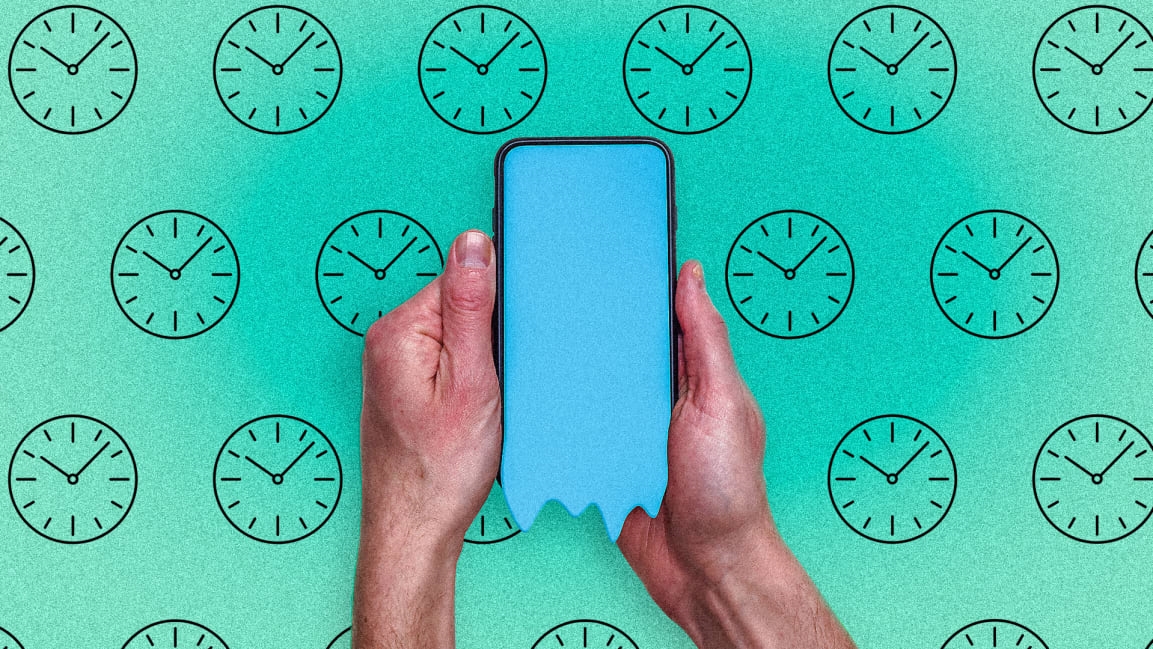If you’ve got 15 minutes, here are 6 more productive ways to spend time on your phone
One of my greatest challenges when I switched to freelancing was managing my time. Taking too many breaks; not taking any breaks. Worse—taking a “break” to do other work-related tasks, like cleaning out my inbox or catch-up reading marketing newsletter subscriptions.
When I would take a proper break, too often I found myself doomscrolling through news or social media on my phone. Hardly the most energizing or invigorating experience.
We don’t need to hide our phones during a break. We just need mobile break options that improve our state of mind—not bring us down. With a lot of personal trial and error, I’ve found six different ways to use my phone on a break, each one that refreshes me, clears my head, and re-energizes me.
1. Listen to a short podcast
Get a couple podcasts in your subscription list with episodes under 15 minutes. That way, you make it through the whole thing and don’t get sucked into a longer-than-intended break. (Pro tip: go with something episodic so you don’t risk a cliffhanger.)
ListenNotes is a great podcast search engine, and you can filter for podcast length on its free version.
It may take some time to find the one or two short podcasts that work for you. I originally tried a couple “poem of the day” podcasts. Turns out that contemporary poets are a fairly gloomy lot, and that wasn’t the vibe I wanted on a break. My go-to short podcasts are Accessible Art History and Cabinet of Curiosities.
2. Get in some foreign language study
I don’t care what the books say: nobody is learning a foreign language in just 15 minutes a day. But that 15 minutes can be a useful time to get some supplemental learning done.
Most foreign language learning apps have short review lessons, vocabulary tests, or games you can do on your phone. Duolingo is a great, free option for learning vocab. You could also find a short easy language podcast. Since I want to restart learning Italian, I did a ListenNotes search to find one.
Try a few different phrases in your search: for example, the phrase “easy Italian,” rather than “beginning Italian” or “beginner Italian” returned the longest list for me. Then you can narrow it down by category so you’re learning through something you care about.
3. Try walking meditation
Mindfulness, guided meditation, and breathing exercises are great for a 15-minute break (or even a one-minute break). But if you want to get out of your chair, you might try walking meditation.
We know walking is good for the brain, so why not give it a shot? Calm and Headspace, two popular meditation apps, both have a bunch of walking meditation sessions.
It sounded odd and a bit dangerous to me at first, like I’d zombie walk into oncoming traffic or a pond as I focused inward. But as it turns out, walking mediation is about noticing your surroundings and being aware of your body’s movements. I find it refreshing and relaxing.
4. Create and listen to 15-minute playlists
You already have playlists for everything else. Create a few short ones to play during a break, depending on what you need that break to do—there’s a wide body of research on the positive impact music has on our brains, so if you can match the music to the mood, you’re good to go.
Do a search on “energize,” “relax,” or “destress” in whatever music app you use.
The snowstorm sounds initially made my list because I’d heard that nature sounds were the way to go. I’ve since learned I do not find snowstorm noises relaxing. Remove from playlist.
Now I stick to music. Songs with a heavy baseline relax me, like Peggy Lee’s “Fever” or Bill Withers’ “Lovely Day.” A slow tempo sarabande works for me too, especially something by Handel or Bach. If I want to get energized, glam rock and classic rock make me smile. Sweet’s “Ballroom Blitz” never fails, nor does pretty much anything by AC/DC.
5. Enjoy a long read of personal interest
We’re all pro scanners now, especially of headlines for think pieces we don’t have time to read. Instead of just skimming headlines and pull quotes, use a read-it-later app to clip those longer reads and saved them for your 15-minute breaks.
While the read-it-later app is also useful to clip and manage all the work- and industry-related articles you want to read, that’s not what you want during your break. Instead, find some sources or authors that regularly publish long reads with a strictly personal appeal. I’m a big fan of Maria Popova’s Brain Pickings, or you can stick to something more classic like The New Yorker. You might also try writer aggregation sites like Medium and Substack, where you’ll find content on every topic imaginable.
One more suggestion: Blinkist. It condenses nonfiction books and podcasts into 15 minutes, and the synopses are available as text to read or as an audiobook. Here’s a look at the categories; I’ve made some editorial suggestions on categories good for breaks and those that aren’t quite break material.
6. If you just can’t resist the social media . . .
This option requires discipline: you don’t want to fall into Twitter toxicity or weirdly inauthentic lifestyle Instagram feeds. Instead, pre-select specific hashtags or accounts that bring you joy or relax you. The Dodo (@dodo) and the Sheldrick Wildlife Trust (@SheldrickTrust) have happy animal videos. Highly recommend.
Again: this option is only for the highly disciplined. To be honest, I’m not there yet.
A break worthy of the name takes some planning
You’re most likely to take a positive break if you’ve already sourced a working list of good options that work for you. If you have to search for things to do every time, that’s the opposite of the point. So make sure to have a series of mobile break content clipped, created, or saved so you can mentally roll through your options quickly and get on to the break.
Bonus option #7: It’s a phone. Call someone close and have a chat.
This article originally appeared on Zapier’s blog and is reprinted with permission.
(26)



